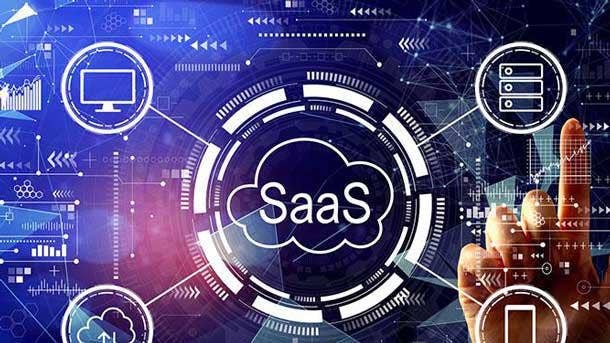The 10 Most Disruptive Technologies To Watch In 2022
From 5G to AI, here are 10 disruptive technologies to look out for in 2022.

The rise of 5G, AI and edge computing are all rapidly changing how people consume technology and how we approach data and IT operations.
No doubt the pandemic has accelerated the pace of innovation as these disruptive technologies change how companies do business and manage customers. 5G networks, for example, are quickly hitting networks around the country, with data rates of 10 to 100 times faster than 4G. Telecom giant Ericsson predicts that by 2025 there will be about 320 million 5G subscribers in the U.S.
CRN has compiled a list of the top 10 most disruptive technologies that will have an impact in 2022. Click through the slideshow to see them all, from 5G to Extended Detection and Response.

10. The Migration To Cloud
With the pandemic catapulting virtual desktops to the forefront, the domino effect has companies moving everything to the cloud, whether public, private or a hybrid.
As the remote workforce is here to stay, and supply chain shortages continue on, cloud computing will further enhance scalability, business continuity and cost efficiency into the future. A cloud-based infrastructure is key to develop business needs, migration strategies and sequenced plans. It also provides performance visibility.
In today’s landscape, cloud migration is crucial to business transformation and provides an enhanced level of security for enterprises. The benefits of cloud migration include hosting applications and data in the most effective IT environment, based on security, performance and costs.

9. Extended Detection And Response
Extended Detection and Response (XDR) is a SaaS-based security detection and incident response tool that combines multiple security products into one security operations system. Its purpose is to allow enterprises go beyond typical security solutions to get a cohesive view of threats across an entire technology environment.
The main advantages of XDR are enhanced productivity of security personnel operations, improved protection and endpoint detection and response capabilities.

8. Edge Computing
Edge computing is on the rise as data continuously becomes the center of all modern business. Edge computing is a distributed IT architecture where client data is processed at the edge of the network, but as close to the original source as possible.
This provides insightful business outcomes and supports real-time controls over crucial business operations and processes. With so many businesses moving data to the cloud, traditional computing is quickly becoming outdated and lagging in the amount of data is can process.
Edge computing moves a portion of data storage and compute resources from the data center and closer to the data source itself. Instead of transmitting raw data to a central location to be processed and analyzed, the process is done where the data is generated.

7. Artificial Intelligence
Artificial Intelligence continues to evolve and play into many of the IT trends emerging in 2022. Companies that apply AI with a software-as-a-service model, as well as companies with data and feedback loops than enable AI, are seeing the biggest demands in today’s M&A environment.
That combination of AI, data and application is powerful. The demand for feedback loops will continue to grow as well as datasets and applications that are tied to business challenges. These challenges that are linked to methods like AI-based robotic process automation and anomaly detection are key for growth.
And as AI grows, there are more and more efficient ways to adapt AI training methods to changing environments and tasks. As methods become easily adaptable, there will be more industrial and scientific applications of these methods that will greatly launch AI forward.

6. Disaster Recovery
As a standalone offering, disaster recovery includes on-demand recovery, tests, exercises and declarations; server image and production data replication to the cloud; automated failover and failback between production and the cloud environment; and recovery time service-level agreements.
It is crucial for businesses to have after the fallout of a cyberattack, which are becoming more and frequent. Three aspect that’s help disaster recovery are the cloud, virtualization and mobile devices.
The cloud provides flexible storage space and enhanced security, allowing businesses to access data anywhere. Virtualization can help a business speed up recovery times after an attack by easily storing away images of data. Mobile devices, when backed up, can be used to get back to business operations quicker.

5. Robotic Process Automation
Robotic process automation implementation is outpacing RPA software market growth, with predictions that it will eliminate paperwork altogether with the ever-evolving intelligent bots. These bots are extracting, filing and processing data online, oftentimes quicker than humans can. The bots can also ensure higher productivity for mundane paperwork-related processes.
The RPA service segment took up more than 61 percent of the market share in 2020, according to a report by Grand View Research. The report also suggests that over the next four years, the annual growth rate for automation-as-a-service will grow to about 26 percent.
The RPA market is also moving to a managed services model due to the demand for recurring payment options for both end users and service providers. This makes bots built with RPA tools easier to consume for the end users. Because of this, it’s predicted that RPA practices will grow by 200-300 percent over the next three years.

4. Low-code Everywhere
Low-code allows organizations to build customized applications with little to no coding efforts. Across many industries low-code technologies, with built-in best practices, offer customizable and configurable solutions just like SaaS solutions.
The rise in low-code puts more businesses in a position for M&A opportunities. Over the last few years, businesses acquiring others look for recurring revenue derived from SaaS solutions which translates to a larger return on investments.
Companies that are looking for, or are using, more and more low-code are putting themselves in better positions for an M&A opportunity as many “citizen developers” can now implement software platforms. RPA and Business Rules Engines will also see the benefits of low-code.

3. 5G
With lower latency, high density and improved usability, 5G will continue to make waves in 2022. The next generation of wireless will greatly serve emerging technologies such as autonomous vehicles, robotic surgery and applications for augmented reality.
Implementing 5G can enable more use cases for fixed wireless access (FWA) as it supports gigabit data speeds and allows a wider broadband experience. It can uphold a wide variety of frequency bands, including sub-1GHZ and 40GHZ and will deliver widespread coverage and support from low, mid to high bands.

2. Decision Intelligence
By 2023, more than 33 percent of large organizations will have analysts using decision intelligence, according to a Gartner prediction.
Decision intelligence combines artificial intelligence and machine learning with human decision making. This helps businesses make accurate and well-thought, pointed decisions quicker. Evolving technologies like decision intelligence brings together data and social sciences to make better decision making for business operations. Decision intelligence is a unifier that brings together complex systems that work as one.

1. Everything-as-a-service
Everything-as-a-Service was born out of Software-as-a-Service which has expanded more services, such as Infrastructure-as-a-Service and Platform-as-a-Service. These cloud-ready services will be beneficial when new and evolving applications come to market.
The XaaS market has grown over the last few years and is expected to grow to a $345 billion market, according to a Global Everything-as-a-service (XaaS) Market Research Report 2019–2026.
More and more enterprises are buying services through cloud computing as it offers agility and flexibility. This allows companies to acquire technology quicker and with fewer costs.